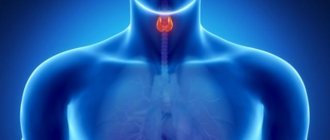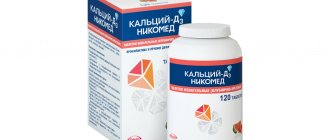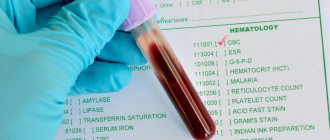General information
What is hypercalcemia? Hypercalcemia is defined as a systemic excess of total calcium in the blood serum, the concentration of which exceeds 10.4 mg/dL (> 2.60 mmol/L) or the concentration of ionized calcium in the blood serum exceeds 5.2 mg/dL (> 1.30 mmol/l). It should be understood that hypercalcemia is not an independent disease, but is a laboratory sign/metabolic symptom that is characteristic of various diseases/pathological conditions.
The role of calcium and the physiology of its metabolism in the human body
- Calcium is part of bone tissue and tooth enamel, ensuring the formation of mineral density of skeletal muscles and is involved in muscle function (providing, along with magnesium, the contractility of myocytes and normal contractions of muscle fibers).
- Participates directly in the exchange and metabolism of other elements, in particular phosphorus, is part of enzyme systems, intracellular ion channels are formed, through which tissue metabolites are then transported.
- Calcium ions are actively involved in the functioning of the coagulation system, as well as in the synthesis of hormonal substances and neurotransmitters, regulation of heart rate/conductivity.
Calcium is removed from the body through the kidneys, intestines and through sweating. Calcium metabolism is influenced by its intake from food, the ability of the digestive system to absorb it, as well as the functioning of the excretory organs (kidneys, intestines). The concentration of calcium in the blood is largely determined by the state of the function of the endocrine system (parathyroid glands and thyroid gland).
The human body contains approximately 1 kg of calcium, which is found in the form of hydroxyapatite mainly in the bones and in small quantities in the intracellular/extracellular fluid. Normal calcium intake is about 1 g of calcium per day for men aged 18-60 years and 1.2 g/day after 60 years. The daily calcium intake for females is determined taking into account not only the woman’s age, but also her reproductive status and is 1000 mg/day for women 18-60 years old; during pregnancy/lactation - approximately 1300-1400 mg/day; During menopause, the calcium norm is 1200 mg/day. An increase in calcium intake in people over 60 years of age is due to the risk of developing osteoporosis against the background of nutritional deficiency and negative age-related processes.
Typically, calcium homeostasis in the blood serum is maintained within normal limits, and the concentration of ionized calcium is regulated quite strictly by the action of parathyroid hormone , as well as 1,25- dihydroxyvitamin D on the bones, kidneys and gastrointestinal tract. Normal calcium levels are maintained by three mechanisms: absorption (absorption of calcium in the intestine), bone resorption (the process of destruction/degradation of bone tissue), which promotes the mobilization of calcium from the mineralized matrix, and the mechanism of reabsorption (reabsorption) of calcium in the renal tubules. Excess calcium in the body (pathological hypercalcemia) is a rather serious condition, a kind of marker, most often found in endocrine, renal and oncological pathologies.
According to statistics, in the general population of people, the incidence of hypercalcemia is 0.1-1.5%; and in samples of patients in hospitals, this proportion reaches 0.5-3.5%, which is facilitated by a complex of interrelated factors and reasons. According to the results of biochemical studies, the overwhelming number of cases of hypercalcemia (about 90%) is caused by pathology of the parathyroid glands (PTG) and oncological processes (malignant tumors of the lungs, kidneys, intestines, mammary glands, prostate in men and malignant diseases of the hematopoietic system).
The most common cause of hypercalcemia is primary hyperparathyroidism (PHPT), which is characterized by abnormally high activity of the parathyroid glands. In developed countries, PHPT is one of the main endocrinological diseases along with diabetes mellitus and thyroid diseases. At the same time, primary hyperparathyroidism occurs in women 3-4 times more often than in men, especially in the postmenopausal period (up to 3% of the population). The most significant hormone involved in the regulation of extracellular calcium is parathyroid hormone (parathyroid hormone).
What complications can it lead to?
When high calcium levels are accidentally detected, immediate action must be taken to avoid complications. Ignoring metabolic disorders can lead to:
- Osteoparosis. Lack of adequate treatment leads to calcium being released from the skeleton into the bloodstream. This becomes the main cause of thinning of bones and joints, which means bone fragility increases. Spinal curvature is observed in 85% of patients with hypercalcemia.
- Formation of kidney stones. The kidneys are a paired filtering organ that purifies the blood, which means they also accumulate calcium. Unfortunately, it is impossible to identify stones at an early stage. They make themselves felt when the situation has already started and blockage of the ducts or the movement of stones through the ureters begins, which is always associated with unbearable pain.
- Dementia and other central nervous system disorders.
- Heart rhythm disturbances.
The musculoskeletal system and kidneys are usually the first to suffer. If you have a frequent urge to urinate, you need to check not only your bladder, but also your blood for calcium levels.
Pathogenesis
The pathogenesis of hypercalcemia and clinical manifestations is multifaceted. In this connection, we will briefly consider only the pathogenesis of hypercalcemia in primary hyperparathyroidism. It is based on a violation of the mechanism of suppression of parathyroid hormone (PTH) secretion. Excessive production of PTH causes a decrease in the renal threshold for reabsorption (re-absorption) of phosphates and in turn provokes the development of hyperphosphaturia / hypophosphatemia . Hyperphosphaturia and excessive production of PTH stimulate the synthesis of calcitriol 1,25-(0H)2-03 in the renal tubules, which helps to increase the absorption of calcium in the intestine.
Along with this, excess PTH leads to an acceleration of the processes of bone resorption and bone formation, but the process of formation of new bone tissue lags behind the process of its resorption, which ultimately leads to generalized osteoporosis / osteodystrophy and hypercalciuria , which contributes to the development of damage to the epithelium of the renal tubules and the gradual formation there are stones in them. The formation of various organ lesions is based on hypercalcemia , which causes the development of nephrocalcinosis / nephrolithiasis .
In the development of gastrointestinal lesions, in addition to hypercalcemia , accompanied by calcification / atherosclerosis of pepsin and hydrochloric acid is important . Excessive amounts of PTH, along with hypercalcemia, influence the development of pathological conditions of the cardiovascular system: left ventricular hypertrophy , arterial hypertension , myocardial , valvular , coronary calcifications , arrhythmias , increased contractility of the heart muscle. With chronic hypercalcemia, gradual deposition of calcifications can be observed in the muscles, kidneys, on the walls of large arteries, myocardium, and superficial layers of the cornea.
Interpretation of results.
Calcium levels are assessed over time by a doctor in combination with other laboratory parameters and clinical data. Independent, isolated assessment leads to incorrect conclusions.
All laboratory services
Make an appointment through the application or by calling +7 +7 We work every day:
- Monday—Friday: 8.00—20.00
- Saturday: 8.00–18.00
- Sunday is a day off
The nearest metro and MCC stations to the clinic:
- Highway of Enthusiasts or Perovo
- Partisan
- Enthusiast Highway
Driving directions
Classification
The classification is based on several characteristics.
Based on the content of the Ca+ cation, several degrees of severity of hypercalcemia are distinguished:
- Mild degree - total Ca content less than 3 mmol/l; ionized calcium – up to 1.5 mmol/l.
- Moderate degree - the level of total Ca is increased to 3.5 mmol/l; and the ionized calcium indicator is up to 1.8 mmol/l.
- Severe degree—total Ca level above 3.5 mmol/l; ionized calcium - more than 1.8 mmol/l.
According to the course, acute hypercalcemia (synonymous with hypercalcemic crisis) and chronic are distinguished.
A hyperparathyroid crisis occurs when excess calcium entering the bloodstream exceeds the excretory capacity of the kidneys. The critical calcium concentration is generally individual, but in most people the toxic effect appears already at levels of 3.4-4.1 mmol/l.
Calcium-rich foods
Dairy products are the most powerful source of calcium. The macronutrient is also found in greens, nuts, vegetables and fruits. The table shows foods by category that are high in calcium.
| Product, 100 g | Calcium, mg |
| Fruits, dried fruits | |
| Oranges | 35 |
| Dried apples | 45 |
| Dried apricots | 170 |
| Figs | 57 |
| Raisin | 56 |
| Vegetables | |
| Cabbage | 60 |
| Celery | 240 |
| Leek | 60 |
| Lettuce | 82 |
| Green bean | 40 |
| Olives | 77 |
| Nuts | |
| Peanut | 70 |
| Pecan | 73 |
| Almond | 254 |
| pumpkin seeds | 60 |
| Sunflower seeds | 100 |
| Dried soybeans | 225 |
| Sesame | 1150 |
| Fish (with bones) | |
| Sardine | 350 |
| Dried fish | 3000 |
| Milk products | |
| Cottage cheese | 95 |
| Milk 1% | 120 |
| Milk 3% | 100 |
| Natural yogurt | 120 |
| Fruit yogurt | 100 |
| Diet yogurt | 85 |
| Processed cheese | 300 |
| Swiss hard cheese | 600 |
| Sour cream | 100 |
| Pudding | 85 |
Almost all foods contain calcium, but in lower concentrations.
Causes
The main causes of hypercalcemia include:
- Primary hyperparathyroidism , which is characterized by hypersecretion of parathyroid hormone and disruption of calcium homeostasis. It is caused mainly by hyperplasia of the parathyroid glands , adenoma , renal failure , and less often develops as part of polylinglandular autoimmune syndrome .
- Malignant neoplasms - multiple endocrine neoplasia types 1 and 2, isolated familial hyperparathyroidism , malignant diseases of the hematopoietic system, multiple myeloma , leukemia , breast , prostate , intestinal , lung , Hodgkin's lymphoma , Burkitt's lymphoma , squamous cell carcinoma , hypernephroma , etc.
- Granulomatous processes. They are represented by chronic diseases with the formation of cellular granulomas in various tissues (primarily in the lungs) - sarcoidosis , tuberculosis , histoplasmosis . Mononuclear phagocytes included in granulomas , through the mechanism of expression of 1-alpha hydroxylase, convert vitamin D into the active form (calcitrirol/1,25OH-D3), which leads to increased absorption of Ca+ ions by the small intestine.
- Taking medications (calcium supplements, vitamin D, lithium, thiazide diuretics, theophylline ) that can cause calcium imbalance through reabsorption processes in the tubules of the nephrons of the kidneys or increased osteodestruction.
- Dietary hypercalcemia syndrome. Caused by a significant increase in the consumption of foods high in calcium or with excessive inclusion of milk or alkalis in the diet (milk-alkali syndrome - Burnett syndrome), which leads to the development of alkalosis , which in turn enhances the process of calcium reabsorption in the kidneys and leads to moderate/ severe hypercalcemia . Nutritional hypercalcemia syndrome can also occur with dyspepsia or with abnormal intake of calcium in the form of various nutritional supplements.
- Endocrine diseases - thyrotoxicosis , acromegaly , pheochromocytoma , hyper / hypocortisolism , excess prolactin / somatotropin .
- A state of prolonged, especially complete immobilization, due to orthopedic procedures (skeletal traction, cast), spinal injuries, neurological disorders, which after 1-3 weeks leads to hypercalcemia caused by accelerated resorption of bone matter. As a rule, calcium metabolism returns to normal after resuming physical activity.
- Benign familial hypocalciuric hypercalcemia . Refers to a hereditary autosomal dominant pathology caused by a mutation of calcium-sensitive receptors. It appears from birth and is clinically insignificant and mild in nature.
Vitamin D for calcium absorption. Fighting your own body
Probably, many of us have seen this picture in our lives: a young mother feeds her baby with a spoon, but he doesn’t eat, turns away, shakes his head. The mother uses all possible means to ensure that the child does not remain hungry: she shows him interesting toys, turns on cartoons, tells fairy tales, etc. and still shoves the ill-fated porridge or puree into her child.
One of the options for further developments is vomiting caused by excessive stomach fullness. After all, the child refused to open his mouth simply because he was already full.
Very often, after watching enough promising commercials, we act towards our body in exactly the same way as this mother. He refuses to absorb calcium, blocks its supply because the amount of the mineral in the blood is quite sufficient to ensure the normal functioning of all organs and tissues, and we force him to remove this blockage, we take vitamin D to absorb calcium. And yet we achieve our goal: the concentration of macronutrients in the blood increases. What's next? Naturally, we are waiting for our condition to improve.
But where are those strong bones and healthy teeth that the old ladies in the advertisements talked about? Bone and dental tissues became dense, but at the same time... fragile as glass. But the result is still the same - fractures, loss of teeth.
Symptoms
Hypercalcemia manifests itself with many symptoms that can be represented in several groups:
- systemic manifestations (dehydration, general muscle weakness, calcification of soft/other tissues and cornea);
- gastrointestinal function disorders (nausea, anorexia , vomiting, abdominal pain, constipation );
- neuropsychiatric symptoms (decreased concentration, emotional instability, depression , slight drowsiness , psychosis , confusion);
- pathology of the musculoskeletal system ( osteoporosis , fractures , hyperparathyroid osteodystrophy , proximal myopathy );
- disorders of the cardiovascular system (shortening of the QT interval, tachycardia , hypertension digitalis drugs );
- renal dysfunction (reduced glomerular filtration rate, polyuria , kidney stones , isosthenuria , nephrocalcinosis ).
The main manifestations of hypercalcemia are presented schematically below.
Symptoms of excess calcium in the body and the intensity of their manifestation vary significantly and depend on the severity of hypercalcemia (on the level of calcium cation concentration in the blood serum). In mild cases, symptoms of hypercalcemia may be completely absent for a long period, while with a sharp increase in calcium in the blood (hypercalcemic crisis), there is a sudden/sharp increase in almost all signs of hypercalcemia in the form of causeless weakness, nausea, decreased muscle tone, increased blood pressure, the appearance of joint/muscle pain.
As intoxication increases, pain appears in the epigastric region, a feeling of thirst, uncontrollable vomiting, constipation , frequent/copious urination, and appetite disappears. Due to dehydration, patients complain of headaches, dizziness, dry mouth, and itchy skin. After some time, the water-electrolyte imbalance is disrupted, polyuria is replaced by oliguria / anuria .
Neuropsychiatric disorders are represented by drowsiness , depression , psychasthenia , lethargy or increased excitability appears. Abdominal pain intensifies and is spastic in nature. DIC syndrome and intravascular thrombosis develop less frequently.
Calcium enters the blood only from the intestines. For this he has two ways.
The first is through the upper part of the small intestine (mainly the duodenum) with the help of vitamin D3, calcium-binding protein and amino acids (lysine and L-arginine).
The second is along the entire length of the small intestine without the participation of any substances (passively).
Our body is designed very wisely: it does not indiscriminately absorb all the calcium that we send into the gastrointestinal tract with food. How much of the macronutrient he retains for himself, and how much he excretes in urine and feces, depends on how rich the incoming food is in the mineral. When our diet contains low amounts of calcium-containing foods, the intestines absorb the mineral from food more efficiently, and the kidneys store it better. If food products are rich in calcium, the intestines stop absorbing it, and the kidneys begin to excrete the excess. This triggers protective functions, because an excess of calcium in the body is fraught with dire consequences. And the human body, unlike itself, knows this and strives to prevent a catastrophe.
Tests and diagnostics
Laboratory tests are prescribed: the levels of Ca2+, Mg2+, PO43 in the blood plasma, the concentration of Ca2+ in daily urine, the content of parathyroid hormone in plasma, the content of cAMP (cyclic adenosine monophosphate) in the urine. If necessary, a blood test for hormones (TSH, cortisol, free T4), determination of the level of 25(OH) vitamin D.
Instrumental studies:
- If hyperplasia/adenoma of the parathyroid glands is suspected, (computed tomography, ultrasound, scintigraphy) are prescribed.
- If there are symptoms of an inflammatory process/malignant neoplasm in various organs, a CT scan of the lungs, radiography, mammography, ultrasound of the abdominal organs, and ultrasound of the kidneys are prescribed.
- Densitometry is prescribed to determine bone mineral density.
Diet
There is no specially designed diet, however, in cases where an excess of calcium is caused by increased absorption of Ca+ in the intestine ( D-hypervitaminosis , Burnett's syndrome ), a diet with a decrease in calcium content in food is recommended (approximately at the level of 800 mg/day). For this purpose, it is recommended to limit the consumption of products such as sesame seeds, hard cheeses, almonds, sardines in oil, garlic, parsley, soybeans, hazelnuts, and also reduce the consumption of milk and dairy products.
Treatment of hypercalcemia
In certain cases, drug treatment is not prescribed. This applies to cases where the calcium level does not greatly exceed the permissible normal limits. In such a situation, it is enough to discuss the correction of the diet, including the list of prohibited foods, which include:
- milk;
- cheese;
- cottage cheese;
- yogurt;
- kefir;
- nuts.
After a certain period of time, the patient will be scheduled for a repeat blood test. It will show whether its composition has returned to normal or not.
In more severe situations, diuretics may be prescribed, provided that kidney function is not impaired and the body is not at risk of dehydration. It is important to strictly adhere to the dosage, because such drugs lead to a sharp decrease in blood pressure.
If the excess calcium is caused by a serious health problem, the patient will be hospitalized for medical attention.
List of sources
- Leonard R. Sanders. Hyperparathyroidism // Secrets of endocrinology / ed. M.T McDermott. - M.-SPb: BINOM Publishing House - Nevsky Dialect, 2001. - P. 129-140.
- Dedov I.I., Melnichenko G.A., Pronin V.S., et al. Clinic and diagnosis of endocrine disorders. - M., 2005. - P. 99–111.
- Volkov M.M., Kayukov I.G., Smirnov A.V. phosphorus-calcium metabolism and its regulation. Nephrology. 2010; 14(1):91-103.
- Cherenko S.M. Primary hyperparathyroidism: basics of pathogenesis, diagnosis and surgical treatment. - K.: Express polygraph, 2011. - 148 p.
- Mirnaya S.S., Pigarova E.A., Belyaeva A.V. et al. The role of the calcium-sensing receptor in maintaining the calcium homeostasis system // Osteoporosis and Osteopathy. 2010. No. 3. pp. 32–36.
"Osteomed" for the prevention and treatment of osteoporosis. Calcium in bones, not in blood vessels
The lack of an effective and safe means of preventing and treating osteoporosis and the desire to help a huge number of people suffering from this disease (in Russia alone this is 33% of women and about 24% of men, 40% of people over 50 years of age are at risk), prompted Russian scientists from Penza Institute for Advanced Medical Studies to think about creating a radically new drug that would not only strengthen bone tissue and prevent fractures, but would also be absolutely safe.
Professor, Doctor of Medical Sciences Villoriy Ivanovich Strukov (now 80 years old, 50 of them he devoted to the study of osteoporosis) with a team of like-minded people established that for bone tissue the important factor is not the amount of calcium absorbed, but the presence of young bone cells in the bones, which accumulate this mineral.
The fact is that with age, the number of such cells decreases significantly; cavities form in the bones, similar to a hollow in a tree. Over the years they only increase. Even if you eat calcium with shovels, these cavities will not close, because there are no consumers of the mineral themselves - bone cells, which means there is no one to “feed” calcium.
Self-healing!
Scientists managed to find a substance that can trigger the self-healing mechanism of bone tissue cells . It turned out to be drone brood - an apiproduct rich in macro-, microelements and vitamins. Of particular value for medicine is the content of entomological insect hormones in its composition - compounds similar in structure and properties to testosterone, from which the human body is able to build its own hormones. How? Science has yet to answer this question. The main thing is not even this, but the fact that drone brood stimulates the restoration of normal hormonal levels and, most importantly, testosterone levels .
It has been proven that it is testosterone that affects the production of new young bone cells, it is this hormone that starts the process of their division and that it accelerates it. But nature initially allocated much less testosterone to a woman (25 times!) than to a man, and over the years these crumbs cease to be produced. (Have you ever wondered why women are more likely to suffer from osteoporosis and related fractures?) In addition to the entomological hormones of insects, drone brood contains natural precursors of other human sex hormones - estradiol, progesterone, insulin-like growth factor.
Estradiol enhances the effect of testosterone on the endings of nerve fibers (receptors) of bone cells. Progesterone inhibits the work of bone tissue destroying cells (osteoclasts). And insulin-like growth factor acts as a catalyst for the development of young bone cells. Drone brood, for reasons still unknown, primarily stimulates the division of bone cells located next to the cavity formation. Gradually, the cavities in the bones become smaller and close completely .
Penza scientists used this property of the apiproduct, enhancing its effect with calcium citrate and vitamin D, because newly formed bone cells need calcium saturation (in adequate quantities).
Revolutionary breakthrough
By the way, the absorption of calcium citrate by the body of an elderly person is 20 times higher than calcium carbonate, in addition, this form of the mineral does not disrupt the functioning of the gastrointestinal tract and does not cause the formation of stones and sand in the kidneys. 3 drugs were developed for the prevention and treatment of osteoporosis: “Osteomed”, “Osteomed Forte” and “Osteo-Vit” (patents No. 2412616; 2497533; 2498811). Their effectiveness in closing bone cavities was confirmed by studies conducted in 2009 at the Osteoporosis Center of the Penza Institute for Advanced Medical Studies (for more details, see the article “Modern methods of treating osteoporosis: do we treat or cripple? Statistical data from scientific research...”).
The size of the cavities decreased in 50% of participants, and closed completely in 25%. What is especially valuable: the drugs have virtually no side effects or contraindications. When taking them, only allergic reactions are possible (as, in fact, when consuming any apiproduct).
A revolutionary breakthrough in the treatment of osteoporosis and its marker diseases (arthrosis, arthritis, periodontal disease) was noted at the state level.
The discovery received the status of “Promising Invention” at the “100 Best Inventions of Russia” competition. The public organization of small and medium-sized businesses "Support of Russia" at the All-Russian forum "Business Success 2012" awarded the victory in the nomination "Best Innovation Project of Russia" to the drug "Osteomed". At the Golden Mercury competition, the manufacturer of the drug, , won in the category “Best small enterprise in innovative activity.”
"Osteomed" helps calcium stay where it is really needed - in the bones, and not in the vessels. Smart calcium is right at the address.







